All seats are taken when the first sounds start playing. Jung In Jung, sound artist and researcher, is sitting in front of her laptop as the first words start being projected on the wall: “Welcome to Traumgraz. Please head INSIDE.” This is the start of Traumgraz, an audiovisual performance based on an interactive story written by Lynda Clark, Lecturer in Creative Writing at the Edinburgh Futures Institute (EFI) of the University of Edinburgh, with the help of Google’s Bard AI. The sounds modulated live by Jung In are shrill, grating, at times almost unpleasant.


It is only during the panel discussion at the end of the evening, when Jung In reveals that the sound material she was manipulating on stage had been generated by various AI models, that their abrasiveness starts to make sense.
“Artist Jung In said that when she used AI trained on her own prior musical compositions to generate new sounds for Traumgraz, she found it surprising to hear how much droning sound came out in the new work, and this made her wonder if she’d been using too much drone sound up to that point. One might assume that artists already know their own work intimately; that they couldn’t learn anything new from hearing it ‘remixed’ through AI. But it seems that taking this new angle helped Jung In to reconsider how she might want to shape her musical practice in the future.”
Caitlin McDonald, Postdoctoral Research Associate, Creative Informatics.
To what extent can human creators exercise control on the technological tools they are using? Jung In’s and Lynda’s attempt at steering the AI models in the generation of the text, sounds, and images that make up Traumgraz interactive story illustrate how this is not a straightforward task. Between the human creator and the artificial model, a creative feedback is established: it is the humans who prompt the AI to generate the material they are seeking for, but the sometimes unexpected output of the AI prompts them at varying the narrative of their creative workflow.
“Creative Feedback: The Feats and Failures of Technology” is the title of the event which brought together on the evening of May 10 artists, technologists, and researchers to engage in conversations on the interplay between technology, creativity, and human agency. The event was also the opportunity to launch the new research cluster “Creativity, AI, and the Human” of Edinburgh Futures Institute. The cluster, led by Caterina Moruzzi, Chancellor’s Fellow at the Institute for Design Informatics, aims at creating an interdisciplinary community across the University to influence the development and use of AI tools which enhance the humanness of creativity rather than undermining it.


The second performance of the evening gives the audience a glimpse of what a scenario in which the creative direction is undertaken by an AI could look like. In Figure Infinity, Louis McHugh, sound and new media artist and Audio Studio Manager at the Edinburgh College of Art, and Jung In Jung are sitting at their laptops, wearing yellow vests. They are labourers at the service of the machine, acting as intermediaries of the performance directions that a computer vision and a large language AI model give to a dancer on stage, Alex McCabe. Half-way through the performance, a disembodied AI voice invites the audience to join by giving prompts and comments through an online platform. In so doing, the audience joins a pool of invisible labour workers who lend their services to improve the system, free of charge. Before being delivered to the dancer, however, the audience’s comments are reprocessed and sanitised by the AI. The unexpectedness of the output generated by the AI, which is perceived as a creative opportunity in Traumgraz, stirs instead a disturbing feeling when it is aimed at controlling the embodied actions of a human.
Both Traumgraz and Figure Infinity succeeded in making the audience reflect on the interplay and feedback among artists, technology, and the public, particularly evident in live performances:
“The performances […] captured the co-productive nature of working with AI tools in the creation of art performances. The liveness of these events reasserts that art is something that takes place between humans, the artist, and the audience and AI can add a productive indeterminacy for the participants.”
Paul Goodfellow, artist and Senior Lecturer in the Division of Games and Art, Abertay University
Panel discussion


In the panel discussion which closes the evening, artists and performers and joined by Martin Zelinger, Reader in Computational Arts and Technology, and Jadgeep Ahluwalia, Research Fellow at Abertay University, to comment on the trade-off between automation and agency in creative processes conducted with the use of AI. The question “What are the boundaries that we want to set to the creative feedback between humans and AI?” is in order. We must not let the AI cross the line between being a tool for exploring creative possibilities and a means for controlling human agency.
Further information
- Visit the Creativity, AI, and the Human research cluster
- Read the Figure Infinity: Human-Assisted AI Performance paper (opens in new tab)
- Watch all videos from this event (opens in a new tab)





